Understanding Hay Fever: Symptoms, Causes, and Treatment
Hey there, welcome to our healthcare-focused corner! Today, let’s delve into the world of hay fever or allergic rhinitis—those pesky symptoms that crop up during spring and summer. From runny noses to itchy eyes, these allergies can truly put a damper on the seasons. But fear not! We’re diving into hay fever treatments, symptom relief, and prevention strategies right here.
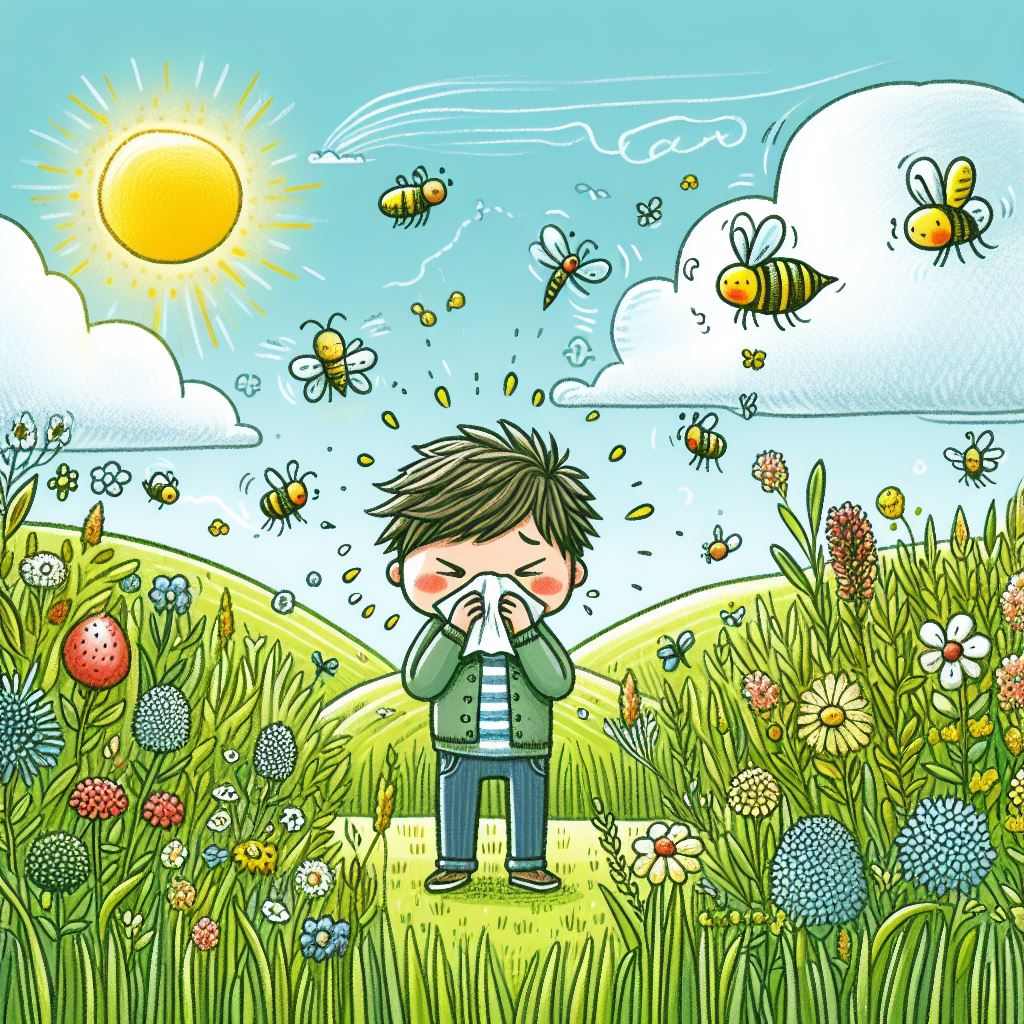
Meet Abraham: Your Healthcare Guide
Meet Abraham, an advanced clinical medical practitioner sharing evidence-based healthcare insights. While usually in the general practice scene, he’s currently filming amidst Croatia’s beauty. Rest assured, all information shared here is scientifically backed. Read more…
What’s Hay Fever and Its Culprit?
Hay fever, also known as allergic rhinitis, mirrors cold symptoms but is triggered by pollen—not viruses. As pollen levels soar, our immune system kicks in, mistaking pollen as a threat and causing those familiar allergy symptoms.
Hay fever or allergy treatments
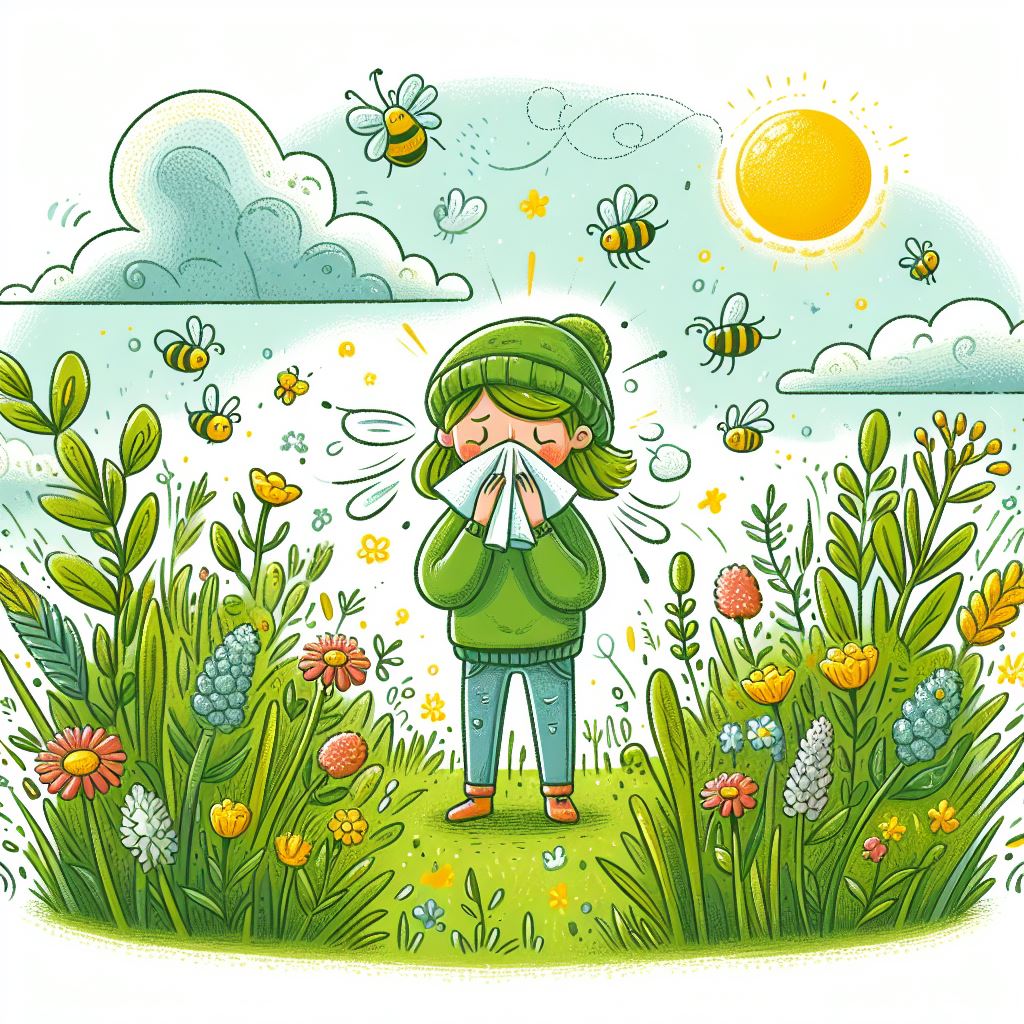
- Now, let’s talk about treatments. Hay fever or allergy treatments can be a bit of a minefield because there are many different treatments out there. So, I thought the best way to give this information on this blog is to go through each body part, all the different types of symptoms, and then discuss the treatments for those kinds of symptoms. For example, if you’re having itchy eyes, you’re going to know what the best thing for that is. I’m not going to give you a general sort of treatment; we’re going to go through each specific symptom and look at its treatments. I thought that’s the best way. But again, please remember, it’s all going to be chaptered in the description below, so if you want to find that specific symptom, click on the chapter below.
- Okay, so let’s first begin with oral treatment. This is going to be our foundational treatment. When it comes to hay fever allergies, we need our oral treatment as our foundation, and then we can build on it. The foundational oral treatment is what we call antihistamines. Antihistamines, for example, we have cetirizine, loratadine, and fexofenadine—notice how they all end in ‘dine’? They’re all antihistamines, and they work against histamine production and the release of histamine, which is causing those allergy symptoms. By stopping overproduction, we’re going to stop those symptoms.
- Now, when it comes to choosing an antihistamine, there are many different ones which I’ve already named a few. There are what we call first-generation antihistamines, which are the older ones that cause drowsiness, which a lot of patients don’t want. And then there’s the ones that we call the second generation. So, for example, cetirizine, loratadine, fexofenadine—all three of them are second-generation, and generally speaking, they don’t cause drowsiness. However, some patients do get drowsy with them, so please bear that in mind as well.
- In terms of which one I think is the best, I do find cetirizine is particularly good for more skin-type allergies. I feel like loratadine is also good, but it’s not as good for skin stuff. But if you’re having sinus stuff, itchy eyes, cetirizine can be quite good. But my favorite one of all of them is fexofenadine. Okay, so before, a few years ago, fexofenadine here in the UK, you couldn’t buy it over the counter from the chemist; it was prescription-only. But I think recently, it has become a P-medicine, which means that you can buy it over-the-counter from the chemist. I’m not sure about what it’s like in other countries. So, remember those three names—cetirizine, loratadine, and the best one, fexofenadine. If you can get fexofenadine, it’s once a day, really easy to take, and it works really well for both skin conditions and the upper symptoms that we’re talking about—itchy eyes, runny eyes, runny nose. That’s what fexofenadine is, my go-to if you can get it.
When to see a doctor
Now, please do remember, though, when it comes to any medication, always, always, always, speak to a healthcare professional so they can check it out, they can speak to you about it, they can check what other medicines you’re taking to make sure there are no interactions. And two, always read the information leaflet that comes with any medication just so you can make sure you’re safe and suitable to take it. That is the most important thing because your health is the most important thing.
Okay, so now that we’re done with the foundation stuff, let’s begin with the body parts. Let’s start with the eyes. If you’ve got itchy, runny eyes, whatever symptoms like that, hay fever-type symptoms, remember that itching them or rubbing them is only going to make it worse. Pollen is microscopic, so it’ll be on your hands, it’ll be on your clothes. And if you’re rubbing your eyes constantly, you’re not washing them, it’s just going to make it worse, and you’re going to get this feedback loop that’s just making things worse, and you’re constantly doing it. So, please, please, please try not to rub those eyes—that’s one of the most important things. But now let’s talk about those treatments.
Eyes: Combatting Itch and Irritation
So, step number one—the first thing you need to do if your eyes are really, really itchy, okay, and they’re making you annoyed—is you need to do a cold compress. Now, you can buy eye masks that you put in the fridge, but that’s a bit difficult if you don’t have it because I’m sure you want to do something straight away. Another easy option is to get some cucumbers—you probably keep them in the fridge—cut them up as you’ve seen in the movies, lie down, close your eyes, and put them on top of your eyes. Okay, this is just going to give us that immediate relief straight away, that cold compress effect, but without having to buy something.
Now, another home remedy type of thing that you can do straight away is putting some Vaseline underneath the eyes. Okay, what is this going to do? Well, first of all, it’s going to pick up those little pollens, those microscopic ones that we can’t see, they’re going to stick to the Vaseline, so it’s less likely for it to grow in your eyes. So, that’s a good thing. And secondly, it’s probably going to deter you from rubbing your eyes all the time, which, like I said, is just going to make things worse. So, those are two quick things that everyone can do at home.
So, when it comes to treatment for the eyes, my go-to eye drop is sodium cromoglicate. I think it’s quite inexpensive to buy; it’s always available from most chemists, and it works really well at stabilizing the mast cells that are in the eyes, that release the histamine and make things worse. Now, one thing to bear in mind is if you’ve got runny eyes and you’re producing lots and lots of water, they’re constantly flowing—if you’re going to put an eye drop in, it’s probably not going to work very well because it’s going to get flushed out. So, my top tip: if you’re going to use the eye drops, make sure you’re doing a punctual hold. Punctual hold is basically holding this bit here of the eye, so it stops it from draining. So, when you put your eye drop in and you close your eyes, you need to do a punctual hold, okay, just so it gives it time for it to absorb and stick to those mast cells and prevent them from releasing that histamine. Now, if you want more information on how to use eye drop, I do have a few blogs on it; I’ve got a really good blog on actually that I’ll leave up here and in the description below, so please, please, please make sure you read that blog because you need to know how to use eye drops properly to get the most out of it. If you’re not using them properly, it’s pretty worthless, and you’re going to be very disappointed with the effects.
The Nose: Managing the Constant Runny Situation
Okay, so next up, I want to talk to you about the nose, otherwise known as allergic rhinitis—probably one of the most common symptoms that you get with hay fever, allergies, whatever you want to call it—runny nose, constantly having to blow your nose. That is very common because we’re always breathing in, and the pollen goes in, which then causes that reaction that we spoke about, causing those symptoms for us. So, the next question is, what should you do about it? Well, step one, we’re going back to Vaseline, now a good friend. Okay, it’s cheap, it’s inexpensive, easy to use, and I’m sure a lot of you will have some Vaseline at home. The first thing you need to do is just rub some Vaseline around the nose; you can put it inside a little bit as well, completely fine—make sure it’s on adults, not children. But this is just going to help catch that pollen to help reduce it going in as much, which is causing those symptoms for us. So, this is a really quick hack that everyone can do. So, that’s the first hack. But what about treatments? Okay, we can look at nasal sprays next. Nasal sprays can be broken into different categories, so they work in different ways. First of all, we’ve got steroid nasal sprays. Steroid nasal sprays are really, really good for allergic rhinitis and hay fever symptoms; however, you need to bear in mind that they take about two to three weeks for their full effect. So, what does this mean? Well, this means if you’ve got hay fever right now, it’s not going to be that effective for you. You need to give it a bit of time for it to become fully effective, so don’t become disheartened if you just start using it and you’re like, it’s not giving me the immediate relief. So, the preferable thing is, if you know your hay fever gets worse, let’s say in July, you know for a month or two, you need to start using it a month before your season starts. Okay, that way you’re going to get the most benefit out of your steroid nasal spray. Now, another type of nasal spray, which can be quite useful, especially drying up the nose and just helping with those runny nose symptoms, is a decongestant nasal spray. Now, the problem with decongestant nasal spray is, yes, it works quickly, but it can interact with a lot of medicines, it can not be appropriate for certain patients, and also, you can’t use it long-term. You shouldn’t really use a nasal decongestant for more than seven days maximum because it can cause something called rebound congestion, so basically, it makes you congested if you use it for longer than that. So, make sure you speak to your healthcare professional about it if you’re interested in it. But out of the two, I would always go for the steroid nasal spray.
Now, moving on to the next type of nasal spray—barrier nasal sprays. Okay, these are relatively new to the market, and they work similarly to how Vaseline works. Okay, they’re creating that barrier, and they’re going to stop the pollen from going in. Again, they can be quite effective, but out of the three so far that we spoke about, if I was to rate them—if you want immediate relief, decongestant ones can be really good, but if you’re going to use it properly, the steroid nasal spray, I would always go for that one first. And for this barrier one, I would probably put it third or even fourth.
Okay, let’s move to the next nasal spray—the saline nasal spray. Saline basically means saltwater, okay, so it’s a saltwater nasal spray that basically cleans the nasal cavities and it’s going to help sort of re-stabilize the cells there, really, so we’re not reacting as much to pollen, but it also cleans the area from the pollen. These can be quite effective, but obviously not that effective compared to the other sprays that we spoke about. But also, if you don’t want to buy a nasal spray, which is a saline one, you can make one very easily. Okay, you can do some nasal douching, which I spoke about in quite a few of the blogs, but it’s very easy—just boil the kettle, let it cool, get a teaspoon of salt, put it in a cup, pour your water in, mix it in. Obviously, make sure it’s not too hot, let it cool, and then basically stand over a sink because it can be very messy, and sort of suck it in and then just let it pour out. Okay, don’t sniff too much, but if it does go down your back or your throat and it goes into your stomach, it’s not an issue either. But try not to do it as much; this is recommended for adults. “Obviously, but it can be really good at sort of helping stabilize ourselves and to clean the area, so you’re not getting as many symptoms because remember, it’s that buildup of pollen that’s causing these problems. Now, I think one of the most important things when it comes to a nasal spray is using it correctly, just like the eye drops when I said if you’re not using these correctly, you’re not going to get the benefit from it. So, I do have a blog on how to use a nasal spray properly, which I will leave a link to up here and in the description below. So, please, please, please, if you haven’t seen it, please read it because I think it’ll be really, really helpful for those of you who haven’t used the nasal spray or aren’t very confident about using a nasal spray.
Okay, so I feel like we’re really starting to get somewhere now. Next up, let’s talk about those throat symptoms. Okay, sometimes with hay fever or allergies, you can get a bit of a cough. This is usually due to something called a post-nasal drip. Okay, so from the back of the throat, because of those symptoms from the nose that we’re talking about, you get a drip. Okay, and that drips off, irritates the back of the throat, and makes you cough. So, let’s talk about what you can do to help with this.
Okay, so first of all, one of the easiest things you can do to help with this is soak on a hard-boiled sweet or a lozenge, whatever you want to call it. Okay, it doesn’t have to be medicated or anything like that. It can just be a honey one or a flavored one, whatever, okay? But this is just going to help stimulate saliva production so it can help get rid of that pollen as well that’s causing that irritation at the same time.
Now, if you don’t have any hard-boiled sweets or lozenges, you can also try gargling salt water. Okay, we did speak a little earlier about making it for nasal douching, so it’s the exact same process to make it. Basically, stand over a sink and gargle garlic water, spit it out. Make sure you’re not swallowing it. If you accidentally swallow some, it’s not the end of the world. And this is recommended for adults. You can do it as often as you want, okay? There’s absolutely no problem doing it three, four, five times a day, okay? So, it’s completely safe.
And that’s the same with the nasal douching as well, by the way. Now, when it comes to the cough, one of the best things that you can do for it is actually fixing and reducing the post-nasal drip. So, if you look at the stuff that we discussed in the nasal section, because you might not have nasal symptoms but you might have a little cough, okay? It might be the post-nasal drip that’s actually causing it. So, you might actually benefit from the nasal section treatments as well.
Okay, so next up, we’re gonna talk about the skin symptoms. Okay, so skin conditions usually with hay fever, usually, it goes red and itchy. It usually happens after direct contact with pollen, let’s say if you’ve been lying on some grass, let’s say if you’ve been trimming those hedges. Okay, so this direct contact can cause some irritation for some people. So, let’s talk about what you can do to help with it.
So, the first thing I would recommend is just cooling down the area. Okay, just a cold compress, okay? It’s probably not wise to use a cucumber on it like we said about the eyes. Just open up your freezer, get a bag of frozen peas or anything like that, wrap it in a tea towel. Always make sure you wrap in a tea towel, and then slap it on the area that’s itchy and warm to touch, okay? This is going to help straight away just to calm down those symptoms.
Now, another good idea is using a cool moisturizer, okay? So, if you’ve got any sort of moisturizer you use on the skin, slap it in the fridge, let it get cold, and then you can apply it on the area. Okay, some people like menthol moisturizers as well. You can get these to have a bit of menthol in them. It just cools down the skin faster, okay? And it’s probably a lot more effective. But if you don’t have this, that’s fine as well. Just use the fridge technique. It will be just as effective.
Now, for those areas that are very red and itchy, okay? First of all, always speak to your healthcare professional about these. Well, if they do say this is hay fever-type symptoms or allergy-type symptoms, one thing that can be very effective for these is using a steroid cream. One of them that isn’t that potent, for example, is hydrocortisone cream. It can be very effective.
I usually like to go for ointment only because the ointments contain less additives and other stuff in them that might actually sort of make the skin a bit more itchy because the ointment usually has obviously a lot fewer ingredients in there, so it’s usually easier on the skin. And it also sticks on a lot better, so it stays there for longer. The only downside to an ointment is that it’s very sticky and greasy. So, as long as it’s not in an area that’s too difficult for you, I would always go for ointment. But if you really want something a bit easier to use, creams are just as effective as well. So, hydrocortisone’s gonna be very good. You need to use it very sparingly, so that means a little sort of pea-sized amount, well, not a pea-sized, but a little tiny line up to your first finger. It should cover two palm’s area, okay? So, we’re using it very sparingly and we don’t want to use it for too long, probably no longer than seven days, okay? Always please a healthcare professional before you try any of these sorts of creams.
Stay Informed, Stay Healthy
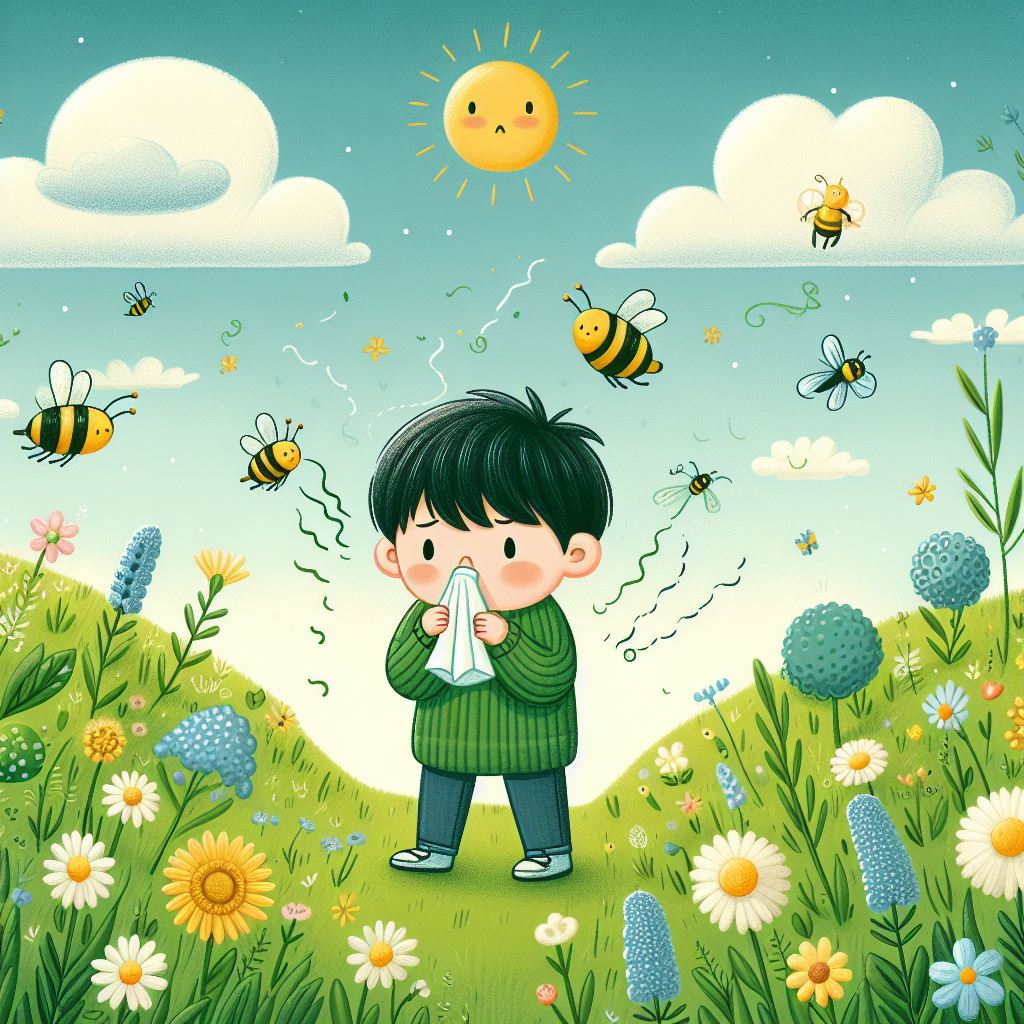
Okay, so that’s the treatments done. You can use a lot of these in combination, by the way, so please, please, please speak to your healthcare professional about which ones they recommend that you use in combination. Okay, you can’t use all of them either, okay? So, the moral of the story is you now know the different treatments, you now know what to do for different types of symptoms, and now speak to your healthcare professional to get their ideas and see which ones you can use in combination. A combination approach is usually far more effective when it comes to treating hay fever symptoms.
Okay, so now that we’re done with treatments, I just want to run through a few quick tips that are going to help with hay fever as well, especially in preparations.
Tip number one, first thing you need to do is when your hay fever is worse, have a look on Google and just give it a quick search to see in your area what the highest pollen count is at the moment, okay? That will give you the ability to kind of find out what sort of pollen makes your symptoms worse. And by knowing that, the next year or whenever, you’re going to know, for example, in July for the next month, I am going to have some pretty bad hay fever symptoms, okay? Then you can prepare and start the treatments. Let’s say, for example, if you have nasal symptoms, you can start a nasal steroid spray earlier so you’re ready for it. You can have your antihistamines ready and you can do all the things that we’ve discussed in preparation. If you’re gonna wait and then you get symptoms, it’s a lot harder to control.
Moving on to tip number two, keep an eye out on pollen count, okay? If you’re looking at the pollen count, check the weather, okay? And if you’ve seen that the pollen count is really high that day and you’re working from home, let’s say, for example, try and keep your doors closed, your windows closed, just to prevent as much pollen from coming into the house. This is a quick and easy way to reduce those symptoms.
Moving on to tip number three, tip number three is making sure you can get a shower every day, potentially, especially when your hay fever’s worse. The reason I’m saying this is because pollen is microscopic. It sticks everywhere, on your clothes, on your skin, okay? So, by reducing the amount of pollen that’s on you and on your clothes as well, so make sure you’re getting them washed as well, it’s gonna help with those symptoms.
And tip number four is a quick physical barrier, such as wearing sunglasses, especially if you’re having no soft eye symptoms. That physical barrier can really help sort of reduce the pollen hitting the surface of the eye, which then causes that immune system issue that we spoke about earlier. So, this is just a quick little hack that everyone can do.
Conclusion
Okay, so it looks like we’ve come to the end of this week’s blog. Thank you for watching. I really hope that you find this information helpful. Please, please, remember always speak to your healthcare professional about the different combinations of treatments that we spoke about in this blog. And if you’re not getting relief, again, you need to speak to healthcare professionals to find out what’s going on because it might not be hay fever. It might be something else, so please remember that. I really do hope you find this information helpful. If you have any of your own tips, please leave a comment below because I’d love to read it and I’m sure everyone else watching this blog would love to read it too. As I always say at the end of every single week’s blog, always remember you’re awesome and I’ll see you next week.

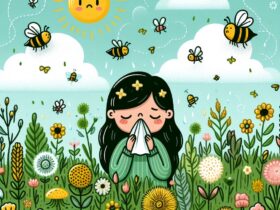


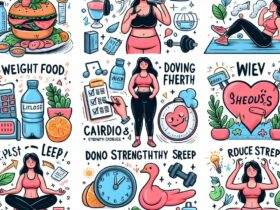
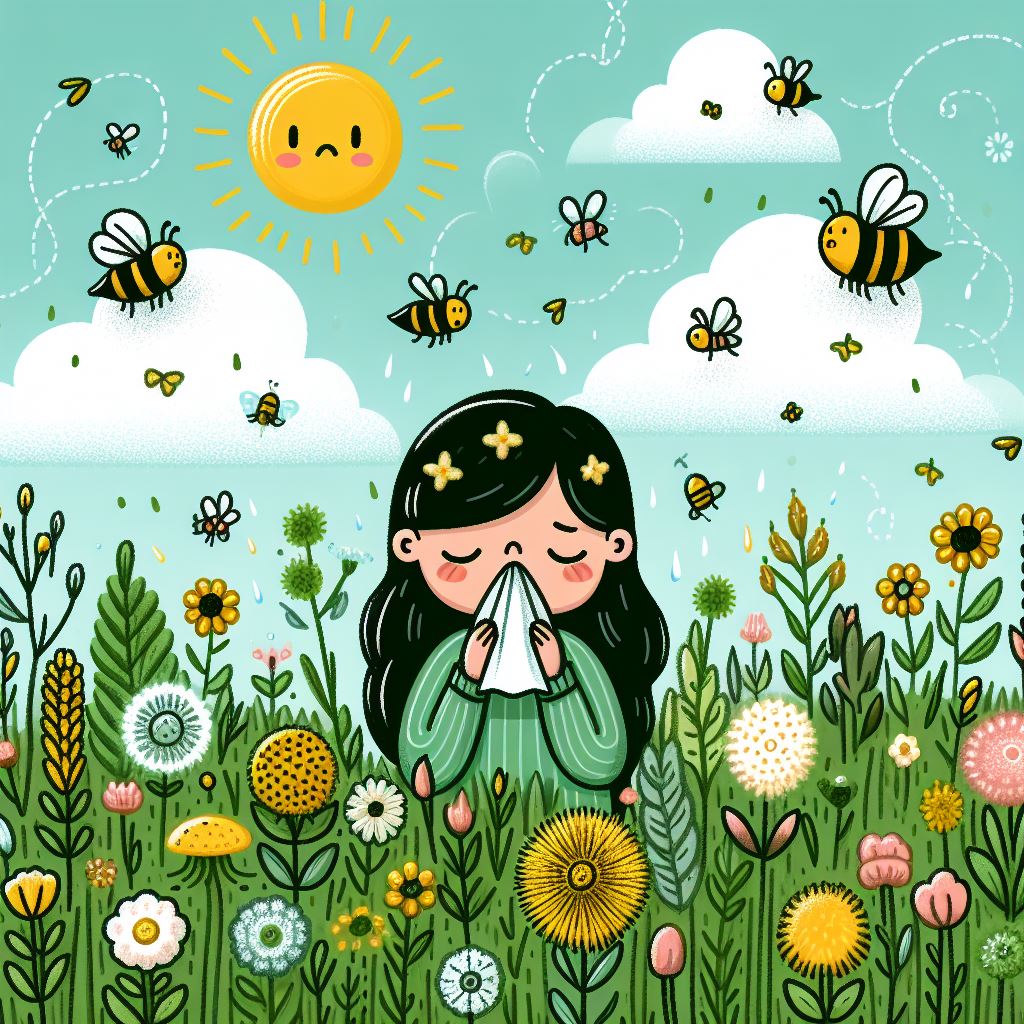
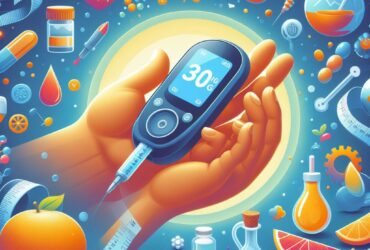

1 Comment